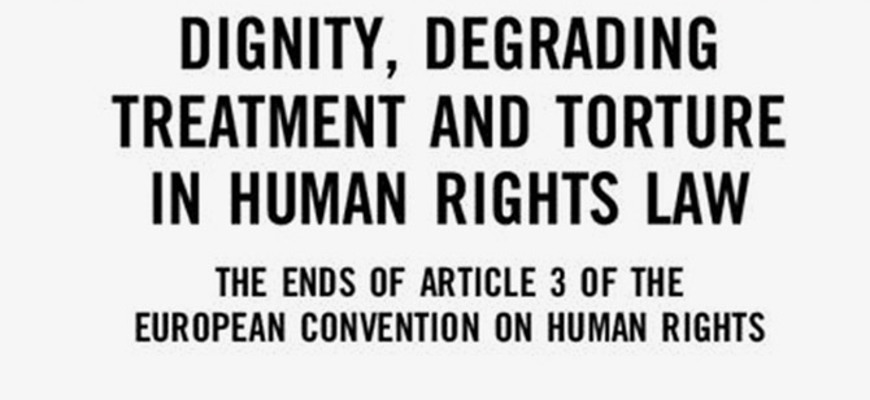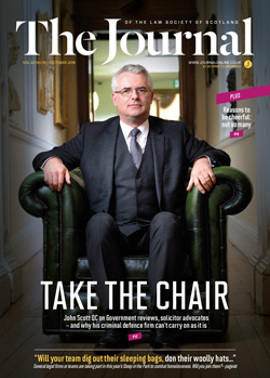Book reviews

Dignity, Degrading Treatment and Torture in Human Rights Law
Elaine Webster
PUBLISHER: ROUTLEDGE
ISBN: 978-1138856639
PRICE: £115
(e-book: ISBN 978-1315719443, £32.39; 12 month rental, £22.20; six month rental, £18.50)
Dr Elaine Webster is an academic at the University of Strathclyde, whose research interests lie in human rights obligations of states and the concept of human dignity in human rights law.
Her book explores article 3 ECHR and argues that the degrading treatment element of the right is a crucial site of analysis in itself and for understanding the parameters and application of the right not to be subjected to torture, as a whole. It explains how the scope of the right not to be subjected to degrading treatment should be identified, but also has a practical reach. Dr Webster’s research has drawn on 1,500 judgments of the ECtHR, from which she identifies analytical tools to advance the application of the right.
Through the book’s seven substantive chapters Dr Webster takes concepts we perhaps assumed we fully understood: torture, degrading treatment, cruel and inhuman treatment, and puts them under a microscope. She takes seriously the legal meaning of words such as “cruel” and “inhuman and degrading”, as meaning unique if related things. At times she sharpens the focus and breaks down these concepts further, considering the role of individual choice, personhood, asymmetrical power relationships, severity and state responsibility. At other times she zooms right out and explores insights from social philosophy and psychology, as well as considering the common usage of the language of the right as a whole.
The book returns several times to the concept of dignity and the extent to which it is inherent in the text, and shapes its interpretation. She concludes that dignity is at the heart of degrading treatment, noting that dignity opens up the concept of degrading treatment and blurs the edges but also elevates the right.
The language is always elegant and precise. Dr Webster elucidates and untangles concepts which we can all be guilty of lazily conflating. But the book’s principal aim is to reach conclusions that have potential for practical impact. This is perhaps most apparent in chapter 6, on the ends of article 3: the protection of human dignity and the limits of state responsibility.
Chapter 6 provides an in-depth analysis of the admissibility decision in O’Rourke v UK (inadmissible: manifestly unfounded). She discusses socio-economic deprivation, sensitively putting in parentheses the concept of active individual “choice” in the context of homelessness. In doing so she chose an arguably unsympathetic protagonist, released from prison after serving a sentence on charges of attempted rape and indecent assault, excluded from temporary accommodation due to complaints about his behaviour, and refused alternative accommodation, to subtly highlight the universal nature of rights. She does not shy away from the obstacles in framing a human rights narrative, but asks the reader to appreciate that the applicant wanted permanent settled accommodation where he would not be known by his offending history. She is critical that the decision narrates these claims as ungrounded rather than potentially reasonable and pragmatic demands by someone asking for state assistance in exercise of his rights. She uses this example to highlight tensions in terms of what is required in order to cross the severity threshold and what is required to impute state responsibility.
In doing so she reminds us that this is not just an intellectual game. The interpretative scope of the right is “high stakes” – there is symbolic as well as practical force. She concludes by leaving us with the message that degrading treatment is a social experience that strikes at the heart of elemental human status. It matters of itself but also in the way it influences understanding of torture, cruel and inhuman treatment or punishment. This as a whole is symbolic of the commitment of human rights law, within the limits of state responsibility, to protect the human dignity of individuals.
The chapters are short, and rooted in the semantic and academic, but always returning to the question of practical application. Written in first person, Dr Webster generates an intimate academic discussion, except she anticipates your questions before you realise you have them. However, we can easily envisage a scenario where this text may inform a court which is scrutinising the definitions within article 3.
That said, practitioners looking to be spoon-fed punchy definitions and neat quotes will come away hungry. The book demands that you break down your assumptions and prepare to think more creatively. It guides you to a point where you appreciate that the research will be influential, perhaps in the context of housing, homelessness, victims of crime, in care settings, but invites you to take the next step towards practical application yourself.
In this issue
- Online and out of line
- Timing the test for detriment
- The power of conversation
- Making Scotland an ACE aware nation
- Reading for pleasure
- Opinion: Jane Mair
- Book reviews
- Profile: Amanda Davy
- President's column
- Round Scotland from A to Z
- People on the move
- When crime no longer pays
- Hold tight for Brexit
- Debt: finding the right formula
- The thick of it
- Fringe benefits boost conference appeal
- Private revolution
- Document Data Group Form Partnership with Law Pro
- Where have all the new firms gone?
- New specialist land registration practice launches
- Sentences in many guises
- Law firms: how to attract and retain the best talent
- Licensing Armageddon – again?
- Planning Bill changing shape
- HMRC called offside in referees case
- Powers of attorney: two essential practice points
- Better access to the law
- Finding the right blend
- Look out for AML certificate launch
- Public policy highlights
- Clients, care, competence and... cancer
- Practice rights and Brexit: working in the UK
- Claims of our age
- Ask Ash
- Paralegal pointers
- A sleep in the park






